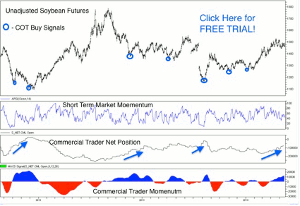The issues facing this year’s soybean crop are not only varied in their nature but also add a huge wildcard to their potential impact, says Andy Waldock of Commodity & Derivative Advisors.
The soybean market has been held just under $15 per bushel since 2012’s US harvest. In fact, it traded all the way down to $11.50 last August before rallying through the harvest. Soybeans are up around 15%, so far this year, and based on a few factors, it appears that this rally could sustain itself. Currently, the market is sitting about where it is supposed to be; in a period of consolidation near the highs waiting to fall once the spring planting becomes more certain. I’m just not sure how much of a buying opportunity we’re going to get come the late June-July seasonal sell-off.
Fundamentally, ending soybean stocks have been reduced once again by the World Agriculture Board. Current estimates leave 130 million bushels in the bins, which is a reduction of five million bushels from their April report. This leaves ending stocks at 3.8% or, a 14-day supply on the market. This is a record low stocks to usage ratio beating out 2012-2013’s tightness by a hair. The scary part about this is that the continued tightness in the soybean market comes on the backs of fantastic production years. The US has produced an average of more than 3.2 billion bushels over the last five years. Going back to 1960, there are only three other individual years in which US production exceeded three billion bushels. Global demand continues drive prices higher as more people from more countries westernize their economies and diets.
Some of the supply tightness is expected to be covered by this year’s plantings. Current estimates suggest that the US will plant 81.5 million acres this summer. This would set a new record for planted soybean acres. Working out the math at an average yield of 45 bushels per acre puts us at better than 3.6 billion bushels produced. That would set a new production record, surpassing 2009’s 3.36 billion bushels. It’s important to remember that these are projections. The reality of this year’s harvest could be significantly different as the odds grow on this becoming an, “El Niño” event.
The current forecasts for 2014 becoming an El Niño event continue to climb. The National Oceanic and Atmospheric Administration (NOAA) have increased their prediction certainty to 65%. However, I’ve read private reports that are expecting an El Niño occurrence with an 80% degree of certainty. A couple of El Niño issues need to be sorted out. First, its impact on this year’s crops is usually limited to harvest time—not planting season. Secondly, it could bring more rainfall and cooler temperatures to the Southeast and into Texas, where it’s desperately needed. Finally, California’s San Joaquin Valley where it’s also desperately needed as they’re expecting leave nearly half a million acres fallow this summer. El Niño is hoped for, rather than feared in many areas this year.
That being said, it’s also important to note that the current El Niño predictions are being modeled after the 1996 and 2001 El Niño events. The soybean futures’ trading pattern in these two years could not look more different. The 1997 event led to exceptionally high prices for old stock beans, which rallied nearly 30% by early May. Meanwhile, new crop, November beans for 1997 remained relatively stable in price before rallying as usual into the harvest period. The 2001 scenario saw the market decline by more than 15% through the spring before rallying the rest of the year, eventually climbing more than 30% from their spring lows.
The interesting thing about this year’s setup is the way the commercial traders are treating the market. Typically, we start seeing commercial traders sell into the pre-planting rally as they try to capture quality pre planting hedge prices. This year, we’re seeing an onslaught of commercial buying. This seems to be happening more regularly and may be their new trading pattern, which you can see on this chart.
We’ve seen strong commercial buying in 9 out of the last 12 weeks with net purchases of more than 100,000 bushels. We saw this type of action in 2011 and while it was a choppy ride, the market held and made new highs in early September before falling post harvest. We also saw this early last year and it led to another $1 per bushel rally into mid-summer. It appears that we’re seeing a shift from supply side forward hedging of crops by producers to predominantly demand based hedging by end users attempting lock in pre planting prices rather than waiting and hoping for a post-harvest sell off.
The issues facing this year’s soybean crop are not only varied in their nature but also add a huge wildcard to their potential impact. We can be fairly certain of the global demand numbers. I don’t think people will be any less hungry this year. The US supply is expecting to set a record but, it has to just to offset the declining current stocks. The El Niño while growing in the certainty of its development has still provided few clues as to its strength. A benign effect could leave the world with huge harvests, as the summer is cooler and wetter than usual. However, some are comparing it to 1997 when El Niño effects claimed more than 2,000 lives and caused more than $30 billion worth of global damage. Given all of the variables in play, it appears particularly important that the net commercial position is betting on higher prices by harvest.
By Andy Waldock, Founder, Commodity & Derivative Advisors






















